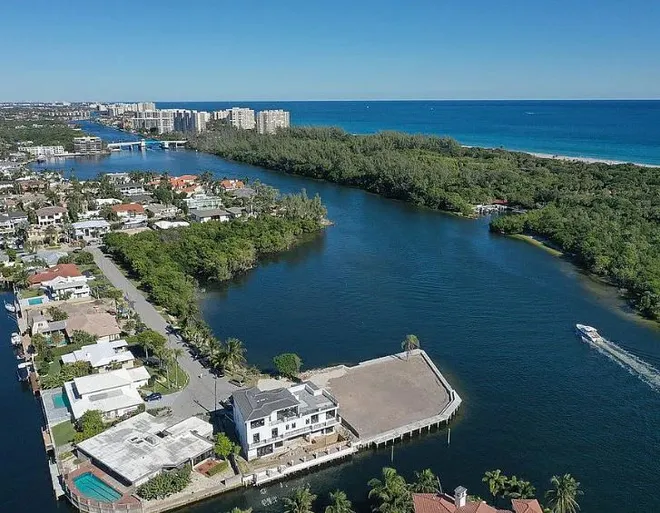An Underwater Property in Florida Is Going for $43 Million. The Developer Calls It a ‘Unicorn.’
The pristine parcel sits along, er, below the coveted Intercoastal Waterway in Boca Raton.
Four acres of beautiful waterfront land in Boca Raton, Florida, is on the market for $43 million.
There’s only one issue—it’s largely underwater.

Giving new meaning to the term “underwater mortgage,” real estate manager William Swaim of Waterfront ICW Properties is offering the submerged land for developing single-family homes.
Swaim calls the property a “unicorn” due to its location and relatively inexpensive price tag. The parcel sits along the Intracoastal Waterway, a series of inlets and canals that wealthy residents use to dock their boats and yachts. Home prices in the area have appreciated monthly by more than 10 percent over the past 18 months. A mansion can go for as much as $18 million a pop.
Swaim, who specializes in buying and reselling flooded land, said the area is the “last and largest undeveloped Boca Raton Intracoastal property for sale in 30 years.”
But he also warns that anyone buying the property will have their work cut out for them.
“Submerged parcels are a headache,” Swaim told The Palm Beach Post. “It takes years to clean them up, and most people don’t want to take years to clean them up.”
His company will build a seawall and fill the dirt for an additional $3.5 million.
Why is the property underwater?
Swaim’s land wasn’t always beneath the sea. The property was above ground until 1957, but an apparently greedy neighbor stole the dirt to build a nearby subdivision, Swaim told The Post.
Some local activists are concerned that overdeveloping properties such as these can harm wildlife.
“Manatees are dying at record rates because of impacts to their habitat, and increasing development on submerged lands is only going to compound that problem,” said Everglades Law Center Executive Director Lisa Interlandi.
But a 2018 Army Corps review concluded that developing the land would not adversely affect endangered and threatened sea turtles, smalltooth sawfish, or manatees.
Four acres of beautiful waterfront land in Boca Raton, Florida, is on the market for $43 million.
There’s only one issue—it’s largely underwater.

The rest of this article is locked.
Join Entrepreneur+ today for access.
Already have an account? Sign In






